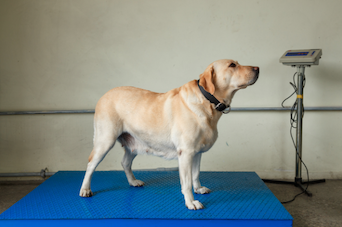Rethinking Osteoarthritis: Findings From the 2019 VET Report
OA and overweight/obesity in pets are inextricably linked. Banfield’s new report offers tools and insight for better management of these patients.

Osteoarthritis (OA) and excess weight work synergistically to decrease the health and quality of life of dogs and cats, according to the 2019 Veterinary Emerging Topics (VET) Report from Banfield Pet Hospital released this week. Among patients diagnosed with OA in the hospital network in 2017, about 51% of dogs and 41% of cats were also diagnosed as overweight or obese.
“As an industry, we face an uphill battle as excess weight becomes normalized and associated conditions like osteoarthritis are on the rise,” said Daniel Aja, DVM, Banfield’s chief medical officer. “With the goal of advancing pet health, our third annual VET Report provides insights into these trends and offers veterinary professionals access to information and resources they can use to manage patients with osteoarthritis.”
The report considers 3 areas of concern for pets with OA—weight gain, reduced mobility, and the progress of arthritic changes—and offers veterinarians a means to better manage and treat these patients. Data were collected from among the 1024 Banfield Pet Hospitals throughout the United States and Puerto Rico between January 1 and December 31, 2017, with the records of 2250 pets (1500 dogs and 750 cats) diagnosed with OA selected randomly for a manual review.
Managing Osteoarthritis
Successful management of OA requires a multifaceted approach, including a combination of diagnostic testing, multimodal pain control, and weight management. As the Banfield data show, however, this ideal approach is not always the path taken. Consider these findings among Banfield hospitals for pets newly diagnosed with OA:
- Radiographs were obtained for only 28% of dogs and 23% of cats.
- Only about 4% of patients were given a pain score.
- Nearly half of patients were sent home with no pain medication.
- Less than 10% of patients were prescribed a veterinary diet for mobility or weight management.
Clearly, achieving better patient outcomes will require improvements in the diagnosis and management of OA.
Overcoming Barriers to Treatment
The primary barriers hindering the management of OA in veterinary medicine include the cost of treatment, hospital time restraints, noncompliance, and owners’ lack of recognition that their pet is painful or overweight.
RELATED:
- The Power of Nutrition in Disease Prevention
- Pet Obesity: Good News and Bad News
- Osteoarthritis in Cats
The good news is that these barriers can be overcome. To improve comfort, mobility, and quality of life in OA patients, the report recommends 5 opportunities for veterinary professionals to improve their approach and partner more closely with pet owners:
- Dispense pain medication for all pets when a diagnosis of OA is made. Not only will this improve the pet’s comfort level immediately, it will also show clients the value of therapeutic management.
- Incorporate existing tools for earlier identification of OA. This can be facilitated with the use of client education materials, activity tracking, and the use of a validated pain and/or quality of life scale.
- Make dietary recommendations, every time. Data show not only that joint health and weight management diets can be very effective for weight loss, but also that pet owners want nutrition advice for their pets. However, few veterinarians make these recommendations for patients with OA.
- Assist with weight management. Help clients understand what overweight/obesity looks like, offer tools that can help with pet weight loss, and celebrate with clients the small victories on the weight loss journey.
- Include the entire team. Weight checks, diet consultations, and overall evaluations should involve the entire staff.











